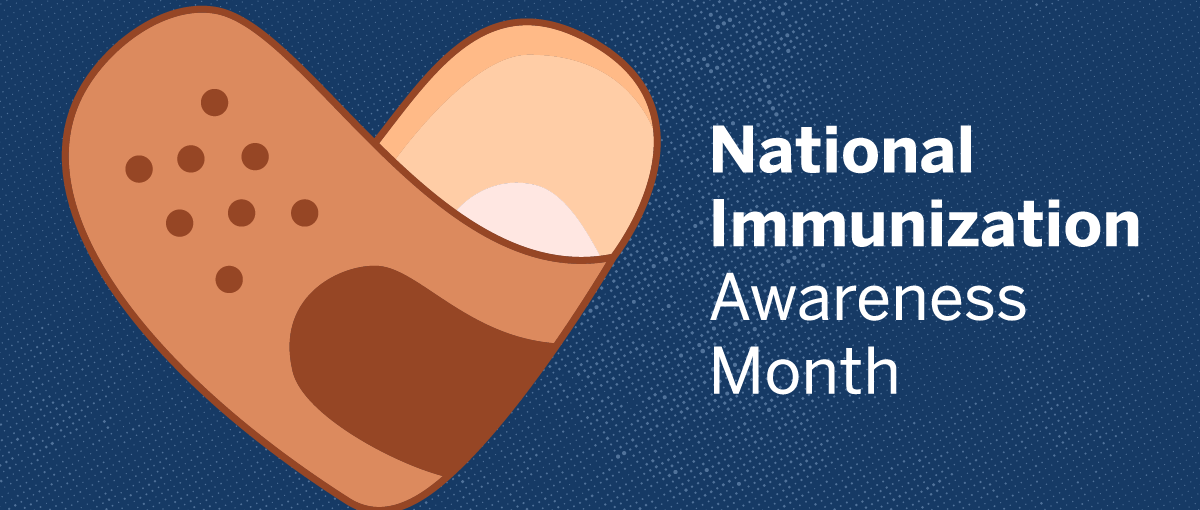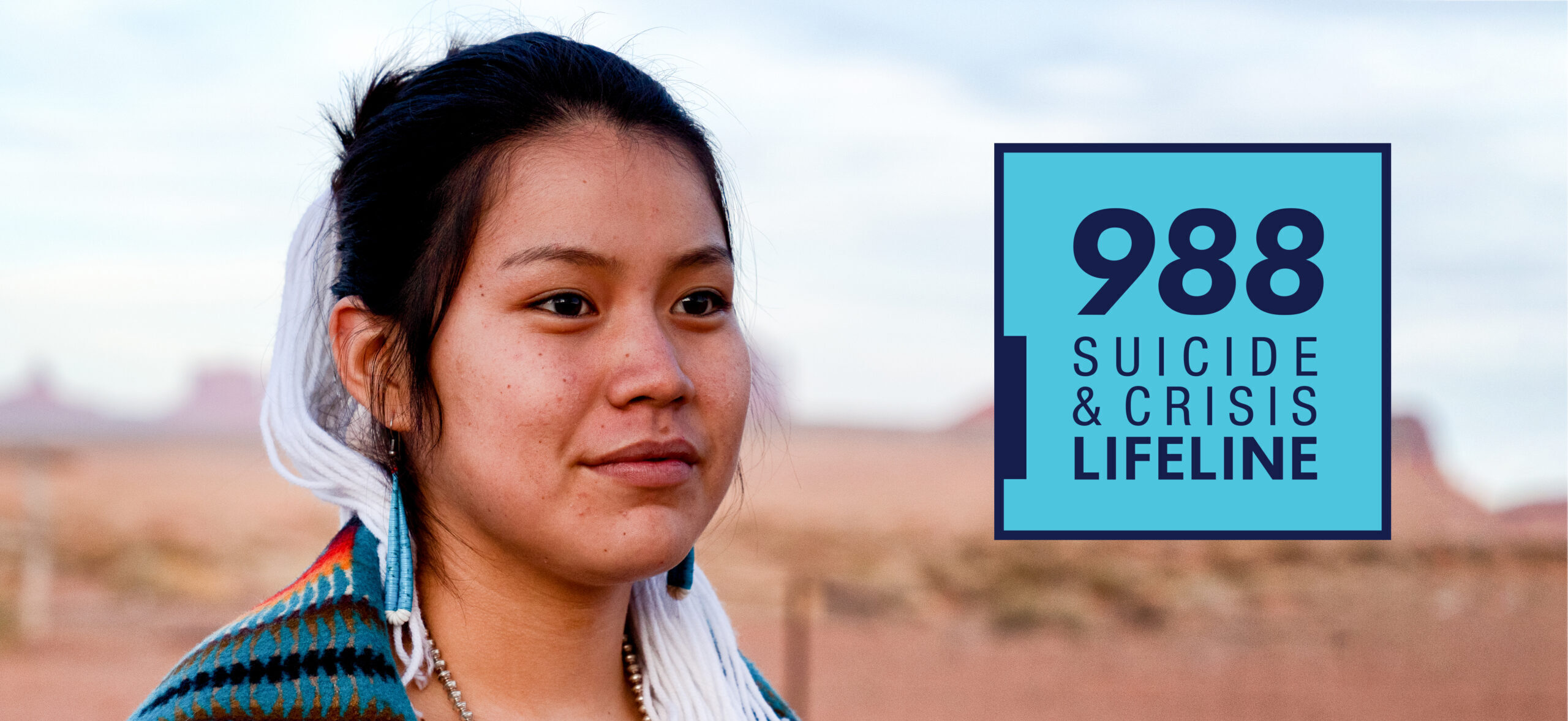State Category: New Mexico
Nutrition Support Programs are Vital to Preventing Food and Nutrition Insecurity and Reducing Chronic Disease – Congress Must Act to Support Them
As of early November 2023, draft appropriation bills by both the House of Representatives and the Senate do not adequately fund the WIC nutrition support program, threatening to break a nearly 30-year, bipartisan commitment to ensure all participants can access the program without waitlists.
(Washington, DC – 11/20/23) – Access to nutritious food is critical to preventing many chronic diseases and is particularly important to keep young children on track with their growth and developmental needs. In 2022, an estimated 12.8 percent of U.S. households experienced food and or nutrition insecurity sometime during the year.
As Trust for America’s Health’s (TFAH) State of Obesity report series has demonstrated, food insecurity is a risk factor for obesity and other nutrition-related chronic diseases. Progress on addressing these critical public health issues is in jeopardy if Congress does not provide funding for federal nutrition support programs during the current fiscal year.
One of the key federal nutrition programs supporting the specific nutritional needs of young children, infants, and birthing people is the Special Supplemental Nutrition Program for Women, Infants, and Children, or WIC. Created in 1972, the WIC program is a short-term, public health intervention program designed to strengthen lifetime nutrition and health behaviors within households with low-incomes. The WIC program provides nutrition benefits tailored to support a young child’s development. Over time, the program, including its food packages, has aligned with new science about the key nutrients infants and children need. These changes have had a significant impact. Studies show that the 2007 benefit update helped improve beneficiaries’ diets and decreased rates of obesity among enrolled toddlers ages 2-4.
The WIC program also adapted to challenges created by the COVID-19 pandemic by implementing new flexibilities, such as allowing WIC agencies to remotely load benefits cards. In 2021, Congress also increased the monthly benefit available to families to purchase more fruits and vegetables from $9 to $26 for children, and from $11 to $47 for pregnant and postpartum participants. These changes modernized the program and in turn increased participation; important because WIC has long had lower participation rates in comparison to the number of eligible families.
Today, nearly seven million parents and children under five years old depend on the WIC program, and participation is expected to grow due to increased program flexibilities. To keep up with increased demand, additional program funding is needed. As of early November 2023, draft appropriation bills by both the House of Representatives and the Senate do not adequately fund the WIC program, which threatens to break a nearly 30-year, bipartisan commitment to ensure all participants can access WIC without waitlists. Increasing food costs, make action to grow the WIC program critically important as families are struggling to afford healthy meals and may be forced to turn to cheaper but less nutritious alternatives.
Critical public health programs like WIC not only provide nutritious foods to families in the short term, but also help prevent diet-related diseases. Trust for America’s Health urges Congress to increase funding in the Fiscal Year (FY) 2024 budget for the WIC program to ensure pregnant and postpartum birthing people and their young children have the nutrition they need to enjoy good
The State of Obesity: Creating Pathways to a Healthier America Livestream Event
(Washington, DC – October 18, 2023) – On October 11, 2023, Trust for America’s Health hosted an in-person and livestream event recognizing the 20th anniversary of its State of Obesity: Better Policies for a Healthier America report at the National Press Club in Washington, D.C. The two-hour event featured White House and federal officials discussing the Biden Administration’s priorities for improving nutrition and health including its National Strategy on Hunger, Nutrition, and Health. In addition, senior federal agency officials discussed a whole-of-government approach to advance transformative policies and programs designed to address increasing rates of diet-related diseases and improve the health of the nation.
Another highlight of the event was a panel featuring community leaders and medical experts discussing effective community level obesity prevention programs and innovative approaches to create sustainable change to promote health.
Four-time track and field Olympian and American record holder Chaunte Lowe closed the program discussing the role that sports can play in promoting health and well-being. Ms. Lowe is a member of the President’s Council on Sports, Fitness, and Nutrition.
Event speakers were:
- Will McIntee, Senior Advisor for Public Engagement, The White House
- James “Jim” Jones, Deputy Commissioner for Human Foods, U.S. Food and Drug Administration (FDA)
- Caree Cotwright, PhD, RDN, Director of Nutrition Security and Health Equity, U.S. Department of Agriculture (USDA)
- Ruth Petersen, M.D., MPH, Director, Division of Nutrition, Physical Activity, and Obesity (DNPAO), Centers for Disease Control and Prevention (CDC)
- Jamila Freightman, CDC High Obesity Program Manager, Louisiana State University AgCenter Healthy Communities Program School of Nutrition and Food Sciences
- Randy Williams, Co-Founder/Vice President of the Robinson/Williams Restoration of Hope Community Center, Bastrop, Louisiana
- Kofi Essel, M.D., MPH, FAAP, Food as Medicine Program Director, Elevance Health
- Chaunte Lowe, 4-time Olympian, American Record Holder, and Council Member, President’s Council on Sports, Fitness, and Nutrition
TFAH President and CEO Dr. J. Nadine Gracia and TFAH Executive Vice President Dr. Tekisha Dwan Everette moderated the event. TFAH Chief Operating Officer Stacy Molander served as the event emcee.
TFAH Celebrates Public Health Contributions of Hispanic & Latino People During Hispanic Heritage Month
In honor of Hispanic Heritage Month 2023, TFAH is highlighting the careers of a select number of people of Hispanic and Latino/Latina descent who have made important contributions to the field of public health.
Carlos Juan Finlay, M.D. (1833 – 1915)
Dr. Carlos Juan Finlay was an epidemiologist and a physician and a pioneer in yellow fever research. He discovered that yellow fever was a vector-borne disease from mosquitoes. As one of the most revered Cuban doctors and scientists, Finlay was nominated seven times for the Nobel Prize in Physiology or Medicine. In 1928, in his honor, Cuba created the National Order of Merit Carlos Finlay as the highest recognition for contributions in healthcare and medicine.
José Celso Barbosa, M.D. (1857 – 1921)
Dr. José Celso Barbosa was the first Puerto Rican and person of African descent to earn an M.D. in the U.S. As a physician and politician, he was supportive of healthcare and fought against racism. After being denied admittance to Columbia University because of his race and ethnicity, he attended and graduated from the University of Michigan Medical School as valedictorian in 1880. He also worked closely with the Red Cross during the Spanish-American War.
César Milstein (1927 – 2002)
César Milstein was a biochemist who was elected a Fellow of the Royal Society in 1975 and awarded the Nobel Prize for Physiology or Medicine in 1984. He advanced technology related to monoclonal antibodies that is still relevant to protect against viruses and pathogens. Learn more about César Milstein here.
Helen Rodríguez-Trías (1929 – 2001)
Dr. Helen Rodríguez-Trías was a pediatrician and women’s rights advocate and in 1993 became the first Latina president of the American Public Health Association. In 2001, Dr. Rodriguez-Trias was a Presidential Citizens Medal recipient and helped create federal guidelines for consent to medical procedures in response to involuntary sterilization. She also established the first newborn care center in Puerto Rico. Learn more about Dr. Rodríguez-Trías here.
Antonia Novello, M.D. (1944 – present)
Dr. Antonia Novello was appointed the 14th United States Surgeon General in 1990. She was the first Hispanic and first woman to serve in that position. She began her career as a pediatric nephrologist then shifted towards the field of public health. Dr. Novello made many contributions at the National Institutes of Health, including in the areas of pediatrics and AIDS research. Dr. Novello was elected to the National Academy of Medicine in 2000. Learn more about Dr. Novello here.
Jane Delgado, Ph.D. (1953 – present)
Dr. Jane Delgado is a psychologist and graduate of NYU and SUNY Stony Brook. She is the current and first woman president and CEO of the National Alliance for Hispanic Health and contributed to the 1985 Landmark Report of the Secretary’s Task Force on Black & Minority Health aka The Heckler Report. Dr. Delgado has also authored many books on health, including the groundbreaking Salud: The Latina Guide to Total Health. Learn more about Dr. Delgado here.
Omar Estrada
Omar Estrada is a University of Colorado graduate who works with the Colorado Department of Education to improve access to mental and physical health services for Colorado’s youth. Estrada was recognized by the de Beaumont Foundation’s 40 Under 40 in Public Health for 2023.
Bamby Salcedo
Bamby Salcedo is the President and CEO of the TransLatin@ Coalition. She is a prominent LGBTQ+ and human rights activist and helped develop the blueprint on providing competent healthcare services for transgender people and LGBT people in the U.S., Latin America, and the Caribbean. Salcedo also helped create the Center for Violence Prevention and Transgender Wellness in Los Angeles. Learn more about Bamby Salcedo here.
State of Obesity 2023: Better Policies for a Healthier America
New Report: Rates of Adult Obesity Continue to Climb, Particularly in Communities Experiencing Barriers to Healthy Eating and Few Opportunities for Physical Activity
20th Annual Report Finds 22 States Have Adult Obesity Levels Above 35 Percent
(Washington, DC – September 21, 2023) – The number of adults in the United States with obesity continues to climb according to a new report, State of Obesity 2023: Better Policies for a Healthier America, released today. The report, the 20th annual edition produced by Trust for America’s Health (TFAH), examines the root causes of the nation’s rising obesity rates, and makes policy recommendations to address them.
According to TFAH’s analysis of the latest data from the Centers for Disease Control and Prevention’s (CDC) Behavioral Risk Factor Surveillance System, in 2022, 22 states had an adult obesity rate at or above 35 percent, up from 19 states the prior year. A decade ago, no state had an adult obesity rate at or above the 35 percent level.
West Virginia (41%), Louisiana (40.1%), Oklahoma (40.0%), and Mississippi (39.5%) have the highest rates of adult obesity. The District of Columbia (24.3%), Colorado (25.0%), and Hawaii (25.9%) have the lowest adult obesity rates.
Over the past two decades obesity rates have climbed for all population groups with certain populations of color experiencing the highest rates, often due to structural barriers to healthy eating and a lack of opportunities and places to be physically active.
Data summarized in the report from the 2017 – 2020 National Health and Nutrition Examination Survey (NHANES) tracks obesity trends nationally and within populations groups. Nationally, 41.9 percent of adults have obesity. Black and Latino adults and people living in rural communities tend to have the highest rates of obesity.
- Black adults have the highest level of adult obesity at 49.9 percent.
- Hispanic adults have an obesity rate of 45.6 percent.
- White adults have an obesity rate of 41.4 percent.
- Rural areas of the country have higher rates of obesity than urban and suburban areas.
Obesity rates are also increasing among children and adolescents with nearly 20 percent of U.S. children ages 2 to 19 having obesity according to 2017–2020 NHANES data. These rates have more than tripled since the mid-1970s, and Black and Latino youth have substantially higher rates of obesity than do their white peers.
An Evolving Understanding of Obesity
Since TFAH’s initial report, published in 2004, the national adult obesity rate has increased by 37 percent and the national youth obesity rate increased by 42 percent. The widespread increases show that obesity is a society-wide, population-level issue, i.e., one rooted in societal and environmental factors that are often beyond individual choice. TFAH concludes that solving the nation’s obesity crisis will require addressing the economic and structural factors that impact where people live and their access to employment, transportation, healthcare, affordable and healthy food, and places to be physically active.
Over the past 20 years, important strides have been made in understanding that obesity is a disease and how to prevent it, including the role that social determinants of health and health inequities play in driving obesity rates. Furthermore, many obesity-related policies and programs that have been implemented, such as increased access to and benefits within nutrition support programs, have a proven record of success but need increased investment to reach more people and communities.
“It’s critical to recognize that obesity is a multifactored disease involving much more than individual behavior,” says J. Nadine Gracia, M.D., MSCE, President and CEO of Trust for America’s Health. “In order to stem the decades long trend of increasing obesity rates we have to acknowledge that the obesity crisis is rooted in economic, health, and environmental inequities. Ensuring all people and communities have equitable opportunity and access to healthy food and physical activity is fundamental to addressing this crisis.”
Addressing obesity is critical because it is associated with a range of diseases, including type 2 diabetes, heart disease, stroke, arthritis, sleep apnea, and some cancers. Obesity is estimated to increase U.S. healthcare spending by $170 billion annually (including billions by Medicare and Medicaid).
Recommended Policy Steps to Address the Obesity Crisis
The report includes recommendations for policy actions that should be taken by federal, state, and local officials and other stakeholders within five issue areas:
- Advance health equity by strategically dedicating federal resources to efforts that reduce obesity-related disparities and related conditions, including by increasing funding for CDC’s chronic disease and obesity prevention programs.
- Decrease nutrition insecurity while improving nutritional quality of available food. Actions steps include guaranteeing healthy school meals for every student, increasing access to the Supplemental Nutrition Assistance Program (SNAP) and other nutrition support programs, and implementing a mandatory front-of-package labeling system on food packaging to help consumers make informed choices.
- Change the marketing and pricing strategies that lead to health disparities, including closing tax loopholes and eliminating business-cost deductions for advertising unhealthy food to children.
- Make physical activity and the built environment safer and more accessible for everyone. Action steps include increasing federal education funding to support health and physical education in schools and investing in active transportation projects like pedestrian and bike paths.
- Work within the healthcare system to reduce disparities and close gaps in clinical-to-social service referrals by increasing access to health insurance through expanding Medicaid, making marketplace insurance more affordable, and expanding healthcare screenings for social needs.
Read the full report
Navigating Climate-Related Threats to the Public’s Health
The Urgency of Emergency Preparedness in Light of Extreme Weather Events
(August 29, 2023) In the first eight months of 2023, the United States confronted numerous climate challenges, indicating a pivotal moment for the nation and the planet. Hawaii faced the country’s deadliest wildfires in over a century, claiming more than 100 lives and leaving a staggering cost in their wake. In California, storms tested the state’s resilience through floods and mudslides, while in Phoenix, weeks of intense heat threatened its most vulnerable residents. In Vermont, rivers surged past their banks, while haze from Canadian wildfires degraded air quality in more than a dozen states. And all this as the year’s hurricane season is just getting underway.
These events demonstrate the escalating public health threats driven by climate change and the need for public health officials to play a role in addressing them. As global temperatures rise, we are seeing an uptick in heat-related illnesses and even fatalities, especially among individuals who are most at risk. Rising sea levels and intensified storms lead to flooding, which can contaminate drinking water and spread waterborne diseases. Meanwhile, wildfires, exacerbated by droughts and higher temperatures, compromise air quality, leading to a spike in respiratory problems, from asthma to chronic bronchitis. Furthermore, shifting climate patterns are expanding the range of many infectious disease vectors, like mosquitoes, exposing new populations to illnesses like malaria or dengue. The ripple effects of climate change touch nearly every aspect of public health, demanding policymakers’ attention and action.
Below is a partial round-up of the climate-related challenges that the country has already faced in 2023.
Wildfires in Hawaii. The U.S. grappled with its deadliest wildfires in over a century when fires that began as isolated brush incidents on the islands of Hawaii and Maui were intensified by the effects of Hurricane Dora and quickly escalated. Many public officials and residents were caught off guard by the size and rapid spread of the flames, leading to the tragic loss of more than 100 lives. Residents and officials now confront daunting reconstruction needs. Despite Hawaii’s reputation for lush greenery, its defenses have been compromised by significant reductions in rainfall. Diminished La Niña patterns, which traditionally bring cooler and wetter conditions to the region, have shifted, leading to warmer and drier trends. Furthermore, the proliferation of flammable invasive grasses, supplanting native vegetation, increases the fire risks.
Smoky skies. Canada, grappling with one of its harshest wildfire seasons, has seen tens of millions of acres of its landscape consumed by flames. The repercussions have been felt beyond its borders, with smoke significantly degrading air quality in several U.S. regions, including New England, the Southeast, and the Midwest. These conditions have led the Environmental Protection Agency to issue air quality alerts affecting millions of Americans. This sharp rise in fires is largely linked to the effects of global warming, which brings about drought and intense heat, rendering forests more vulnerable to blazes.
California storms. In early 2023, intense rains hit California. While they replenished reservoirs and snowpacks, they also caused flooding, mudslides, sinkholes, and tree damage that impacted infrastructure. A severe winter storm in late February trapped residents and led to the deployment of the California National Guard. Shortly after, another storm in the Sierra Nevada caused two fatalities and power disruptions. March saw the arrival of two bomb cyclones that brought tornadoes, heavy rain, and snow. These extreme weather events, exacerbated by climate change, underscore California’s oscillation between droughts and powerful storms. Such climatic shifts create atmospheric rivers that deliver heavy precipitation.
Notably, Southern California effectively weathered Tropical Storm Hilary’s record-setting rainfall in August, in part due to proactive measures like school closures and swift emergency response to road flooding and fallen trees. Despite the storm’s potential severity, no deaths were reported in major areas like Los Angeles and San Diego, highlighting the importance of preparedness.
Groundwater shortages in Arizona. Arizona officials sounded the alarm in June on groundwater shortages, signaling a potential halt to the rapid housing development in the Phoenix area, which is among the fastest-growing regions in the U.S. Although existing building permits will remain unaffected, the announcement underscores the urgent need for alternative water sources and conservation measures in future projects. Governor Katie Hobbs reassured that Arizona is not immediately running out of water, but shortages could have significant implications for the region’s future. Prolonged drought, combined with increasing water demand, have depleted the Colorado River and intensified water scarcity, posing a challenge for the region’s long-term sustainability.
Vermont flooding. In July, Vermont experienced severe flash and river flooding, leading to extensive damage to communities, roads, bridges, and causing significant property losses. This event broke several records, with Montpelier’s airport receiving the highest single-day rainfall since 1948. The destruction was comparable to the damage from Tropical Storm Irene in 2011. In terms of impact, the destruction from the 2011 and 2023 events was only surpassed by the Great Flood of November 1927, which took place before modern flood control measures were implemented in the state.
Hot water off the coast of Florida. A buoy off Florida’s coast this summer measured a sea surface temperature of 101.1 degrees Fahrenheit, potentially setting a new world record and far exceeding the typical range of 73F to 88F. This extreme heat, part of a concerning trend of warming waters in Florida, poses grave risks to marine life, ocean ecosystems, and human livelihoods. Increasing temperatures, intensified by phenomena like El Niño, could also boost the strength of tropical storms and hurricanes.
Extreme heat in Phoenix. Phoenix endured an unprecedented heatwave in July, with temperatures exceeding 110°F for 31 straight days, surpassing a 1974 record. This coincided with a global trend marking July the warmest month ever registered. Hospitals reported an uptick in heat-related cases, ranging from heat cramps to lethal heat strokes. The city’s medical examiner confirmed 25 heat-related deaths and is investigating many more. Critical infrastructure, such as air conditioners in shelters and medical buses, malfunctioned due to the extreme temperatures. With shelters at full capacity and public housing waitlists stretching for months, many unhoused residents were left without a haven from the oppressive temperatures.
President Biden announced initiatives in July to support communities suffering from extreme weather. To combat the rising heat, the primary weather-related cause of death in the U.S., he directed the Department of Labor (DOL) to issue its first-ever Hazard Alert concerning heat, with the intent to reinforce worker protections against heat-related dangers under federal law. This alert will educate employers on their responsibilities and help ensure that workers know their rights. The DOL has committed to intensifying its enforcement against heat-safety violations, focusing especially on high-risk sectors like construction and agriculture. Meanwhile, the National Oceanic and Atmospheric Administration is allocating up to $7 million to enhance weather forecasting in collaboration with educational institutions, aiming to boost preparedness for extreme weather events. Additionally, the Department of the Interior is in the process of investing $152 million to bolster water storage and climate resilience in California, Colorado, and Washington, addressing the challenges of prolonged drought and ensuring access to clean drinking water.
These efforts build on past actions by the Biden-Harris Administration, such as channeling billions of dollars via the Department of Housing and Urban Development for energy-efficient building upgrades and the establishment of cooling centers. Additionally, in collaboration with Congress, it earmarked over $50 billion from the Infrastructure Investment and Jobs Act to bolster climate resilience throughout the nation.
As Trust for America’s Health (TFAH) has previously highlighted, preparing for weather-related events is a critical element of public health emergency preparedness. Collaboration between public health officials and partners—such as federal, state, local, tribal, and territorial agencies, emergency response teams, community-based organizations, and hospitals—is fundamental. Working together, they can pave the way for better preparation and response strategies, utilizing data to predict and lessen potential health impacts. Proactive measures are crucial in safeguarding communities from these escalating threats. For example, the nation needs significant investment in climate-resilient infrastructure — from storm-resistant housing to updated water management systems. To protect people from extreme heat, communities must prioritize public education on heat risks, establish cooling centers, and adapt urban infrastructure to reduce heat retention. It’s crucial to acknowledge that socioeconomic and health inequities have historically worsened the impact of extreme heat on communities of color, making targeted interventions in these communities even more essential. Strengthening early warning systems and ensuring equitable access to hydration and emergency healthcare resources are vital steps. It’s also imperative to bolster our health systems’ readiness to respond to the increasing burden of climate-related illnesses. This includes enhancing disease surveillance and training healthcare professionals to recognize and treat emerging health threats, especially in communities that face disproportionate risks.
In line with a comprehensive public health approach, the Building Resilience Against Climate Effects (BRACE) framework from the Centers for Disease Control and Prevention (CDC) offers a vital tool. This strategic framework empowers officials to develop and implement health adaptation plans tailored to their specific climate change challenges. By guiding health departments through a five-step process — from forecasting climate impacts and assessing vulnerabilities to developing and implementing a comprehensive adaptation plan — the BRACE framework ensures a data-driven response that accounts for local nuances. Recognizing the disparate effects of climate change on various populations, this approach emphasizes not just broad community safeguards but also targeted interventions to protect those most at risk. To more adequately support these crucial initiatives, TFAH recommends funding the CDC’s Climate and Health Program at a level of $110 million for Fiscal Year 2024. This program collaborates with state, local, tribal, and territorial health agencies to address climate change impacts, primarily utilizing the BRACE framework. Additionally, it offers resources, funding, and support through various initiatives to enhance community preparedness and communication regarding climate-related health risks. As communities continue to witness the tangible effects of a changing climate, leaning into systematic and strategic frameworks like BRACE becomes paramount. The synthesis of proactive planning, community-specific interventions, and overarching public health strategies helps bring about a resilient and equitable response.
Acting to protect health and well-being by improving our systems’ readiness and enhancing protective measures—commonly termed climate adaptation—is a critical public health priority. Climate mitigation refers to efforts to reduce or prevent greenhouse gas emissions or to remove them from the atmosphere, aiming to curb future global warming. Both the Intergovernmental Panel on Climate Change, a scientific body under the auspices of the United Nations that assesses climate change information, and the United States Global Change Research Program, which coordinates U.S. research on global environmental changes and evaluates climate change impacts, emphasize that mitigation and adaptation are complementary strategies crucial for reducing the human impacts of climate change.
August is National Immunization Awareness Month
August is National Immunization Awareness Month. This annual observance is designed to remind everyone that staying up to date on vaccinations is an important way to protect not only their health but the health of everyone around them.
Vaccines are a public health success story. Today, we are fortunate to have a broad spectrum of safe and effective vaccines, which if received on schedule, protect patients of all ages against vaccine-preventable diseases. Current vaccines protect against childhood disease including chicken pox, measles, and whooping cough, while protecting adults from the flu, Tdap, and shingles. Vaccines have also eradicated or nearly eradicated life-threatening diseases, such as smallpox and polio.
Children as young as 1-2 months old should be vaccinated against childhood illnesses and school-age children may need vaccine updates before they can return to school this fall. Ensuring that every child sees their doctor for a well-child visit and to receive any needed vaccine or vaccine updates is one of the best ways a parent can protect their child’s health and that of the community. Because the immunity created by a vaccine can lessen overtime, it’s important that children receive their vaccines on the recommended schedule. Adults may also need vaccine updates or to receive recently approved vaccines such as the RSV vaccine for adults 60 years of age and older.
During the COVID-19 pandemic, routine childhood vaccination levels among school-age children in the U.S. decreased, likely due to missed well-child medical visits. Globally, a report by UNICEF and the World Health Organization found that childhood vaccination coverage worldwide increased with about 4 million more children receiving full immunizations in 2022 compared to 2021, but were still below pre-pandemic levels.
Vaccines meet strict safety and effectiveness measures
In the U.S., safety measures are strict and prioritized to ensure that vaccines are safe for patients. Before any vaccine is approved for use, it is tested for safety and effectiveness through clinical trials and then must be approved by the Food and Drug Administration (FDA) and recommended by the Center for Disease Control and Prevention’s (CDC) Advisory Committee on Immunization Practices. While some people experience mild side effects after receiving a vaccine, such as swelling at the shot area, mild fevers and chills, serious reactions are extremely rare. Overall, the safety of all vaccines is closely monitored to ensure their continued safe use. If patients have questions about a vaccine including any potential side effects, they should speak to their healthcare provider.
Centuries of Systemic Racism Has Created Distinct Mental Health Challenges for Minority Communities
In 2008, July officially became National Minority Mental Health Awareness Month, originally designated as Bebe Moore Campbell National Minority Mental Health Awareness Month by the United States House of Representatives. Until her passing in 2006, Bebe Moore Campbell was an author, advocate, co-founder of the National Alliance on Mental Illness (NAMI) Urban Los Angeles, and a national spokesperson, dedicating herself tirelessly to promoting mental health education and eradicating stigma within diverse communities. National Minority Mental Health Awareness Month is observed to recognize the distinct hardships that members of minority communities often face concerning their mental health.
According to the U.S. Department of Health and Human Services Office of Minority Health, in 2021, “only 39 percent of Black or African American adults, 25 percent of Asian adults, and 36 percent of Hispanic/Latino adults with any mental illness were treated, compared to 52 percent of non-Hispanic white adults.” The 2023 Pain in the Nation Report by Trust for America’s Health (TFAH), also found an increase in suicide mortality “by 4 percent between 2020 and 2021 with the highest increases among American Indian/Alaska Native and Black people.” In addition, TFAH’s report also explained that youth who were American Indian/Alaska Native, Black, Latino, and multiracial had the “highest rates of poor mental health behavior and/or suicidal behaviors compared to other groups in 2021.”
Minority communities experience these disparities in mental health outcomes and care due to factors that are beyond their control. Among other social determinants of health (SDOH), discrimination and economic insecurity contribute to the disparities in access and treatment that members of minority communities can encounter.
Cultural and social stigma around mental health issues among minority communities also contributes to poor mental health outcomes in these populations and can act as barriers to necessary mental healthcare. Systemic racism and discrimination present in the healthcare field and among healthcare professionals also prevent individuals of various racial and ethnic groups from receiving the best mental health treatment available. Negative experiences due to these factors can undermine trust in healthcare professionals and result in patients feeling ignored despite serious mental health issues, which can deter patients from seeking or staying in treatment. Lack of trust can also arise from difficulties patients experience in finding providers from the same ethnic or racial group who share similarities in culture, literacy, and language.
Minority individuals are also more likely to be uninsured, raising financial barriers to seeking and receiving mental healthcare. According to the Kaiser Family Foundation, for example, “Nonelderly American Indian and Alaska Native (AIAN) and Hispanic people had the highest uninsured rates at 21.2% and 19.0%, respectively as of 2021.”
Policy recommendations to address these disparities and barriers can range from prevention efforts, increases in funding, and systemic improvements to the healthcare system. Policy recommendations by TFAH to advance health equity include enacting and funding the Health Equity and Accountability Act, as well as increasing funding for the Centers for Disease Control and Prevention’s (CDC) Racial and Ethnic Approaches to Community Health (REACH) program and its Healthy Tribes program to provide support for all approved applicants. As mentioned in TFAH’s Pain in the Nation Report, TFAH also recommends that Congress support policies and programs that address SDOH to better implement interventions at both an individual and community level; this should include increased CDC funding and a greater emphasis on the importance of screening for SDOH in the healthcare system. Continuous efforts to reduce stigma and bring positive messaging will also encourage individuals in minority communities to seek mental health screening and care. Efforts to ensure accessible mental healthcare, including through enforcement of the Mental Health Parity and Addiction Equity Act and passage of the Effective Suicide Screening and Assessment in the Emergency Department Act, should also be prioritized.
Mental health is a critical public health issue. It is important to understand and recognize the mental health disparities and unique struggles faced by racial and ethnic groups to better help these populations overcome mental health barriers. Acknowledging that minority communities continue to face disproportionate mental health challenges–and responding accordingly on the federal level–can increase awareness of this public health issue and help ensure individuals in minority communities achieve optimal health.
At One Year Mark Data Show 988 Suicide and Crisis Lifeline Has Improved Crisis Care Access and Response, and that Sustained and Increased Funding is Needed
This month marks the one-year anniversary of the 988 Suicide and Crisis Lifeline, which replaced the previous National Suicide Prevention Lifeline with a single three-digit number for mental health, substance misuse, and crisis services. With oversight and funding from the Substance Abuse and Mental Health Services Administration (SAMHSA) and assistance from partners like Crisis Text Line and The Trevor Project, 988 consists of independently operated and funded call and text/chat centers across the country. When individuals in crisis contact 988, trained crisis counselors at these centers listen, provide support, and share resources if necessary. Access to 988 can play a critical role in improving depressed, suicidal, or overwhelming feelings—in fact, SAMHSA estimates that 98% of individuals contacting 988 receive the crisis support they need in the moment. SAMHSA has also identified the current 988 system as a first step toward evolving crisis care to include mobile crisis units, which provide in-person responses, and stabilization centers, which provide a safe place to stay for individuals in crisis.
Even its current form, however, 988 represents a momentous advancement in the effort to connect more Americans with crisis services. In May 2023, for example, 988 answered 45% more calls, 52% more chats, and 938% texts compared to the previous lifeline in May 2022. In total, 988 answered nearly 160,000 more contacts in May 2023 compared to May 2022, and the average time to answer these contacts decreased from 140 seconds to 35 seconds. 988 has also launched specialized services for the LGBTQ+ population, and SAMHSA just announced the addition Spanish language text and chat services. Other specialized services will likely follow for hearing impaired individuals and American Indian/Alaska Native people.
In 2022, Congress supplemented the establishment of 988 with several pieces of legislation containing significant investments and policies to advance behavioral health. The Bipartisan Safer Communities Act (BSCA), passed in June 2022, for example, provided onetime support for 988 and increased support for the National Child Traumatic Stress Network. The BSCA also provided funding for Project AWARE at SAMHSA, which empowers education agencies through training for school personnel, increases awareness and detection of mental health issues, and connects youth and families to needed services. In addition, Congress directed the Centers for Medicare and Medicaid Services to assist schools with expanding school-based health services through Medicaid and funded initiatives at the U.S. Department of Education to hire and retain mental health professionals providing these services.
In the Consolidated Appropriations Act (CAA), enacted in December 2022, Congress built on these accomplishments by reauthorizing the Garrett Lee Smith Suicide Prevention Program, which funds mental health programs for college-age students, as well as several programs to improve the behavioral health workforce. The CAA also bolstered crisis-intervention programs by directing guidance and funding to providers and improving payment for their services.
The U.S. Department of Health and Human Services (HHS) also acted throughout 2022 to expand access to community-based mental health services. In partnership with the Department of Education, for example, HHS has worked to facilitate the use of Medicaid and Children’s Health Insurance Program funds to support school-based behavioral health services. SAMHSA also launched the Mental Health Crisis Response Partnership Pilot Program to improve access to mobile crisis services in high-need areas.
988 is part of a series of investments to address Americans’ mental health needs
Despite this progress, significant challenges remain in the effort to strengthen 988 and connect individuals in crisis to behavioral health services. For example, although state governments carry the responsibility for funding and operating 988 call centers, only a handful of states have passed legislation to secure long-term financial support for the lifeline through telecommunications fees. A recent study, moreover, found that only around half of states have earmarked sufficient funding to meet increased 988 center costs. Due in part to insufficient funding, call centers can also struggle to hire and retain qualified staff and answer rates can vary significantly by state. Improved data collection and analysis concerning 988 services is also necessary to help identify gaps in crisis care and improve lifeline implementation.
On the federal level, ongoing negotiations in Congress could result in cuts to appropriations for 988, which is an alarming prospect given that SAMHSA estimates outreach to the lifeline will increase by up to 50%—to a total of around 9 million contacts—in FY 2024. States will also require additional federal support to develop and implement mobile responses and stabilization units and publicize the full range of 988 services. A recent survey by the Pew Charitable Trusts, for example, found that only 13% of U.S. adults knew about the existence and purpose of 988; awareness was higher among white adults and individuals with a college education compared to Black adults and individuals with a high school degree or less.
Trust for America’s Health (TFAH) will continue to advocate for additional funding and resources to bolster the 988 lifeline and transform the behavioral health crisis system more broadly. Continued bipartisan support is necessary not only to ensure access to existing services, but also to build the next generation of care to meet the growing demand from Americans in crisis.
Recommendations for addressing Americans’ mental health needs and other issues are available in TFAH’s 2023 Pain in the Nation report.







